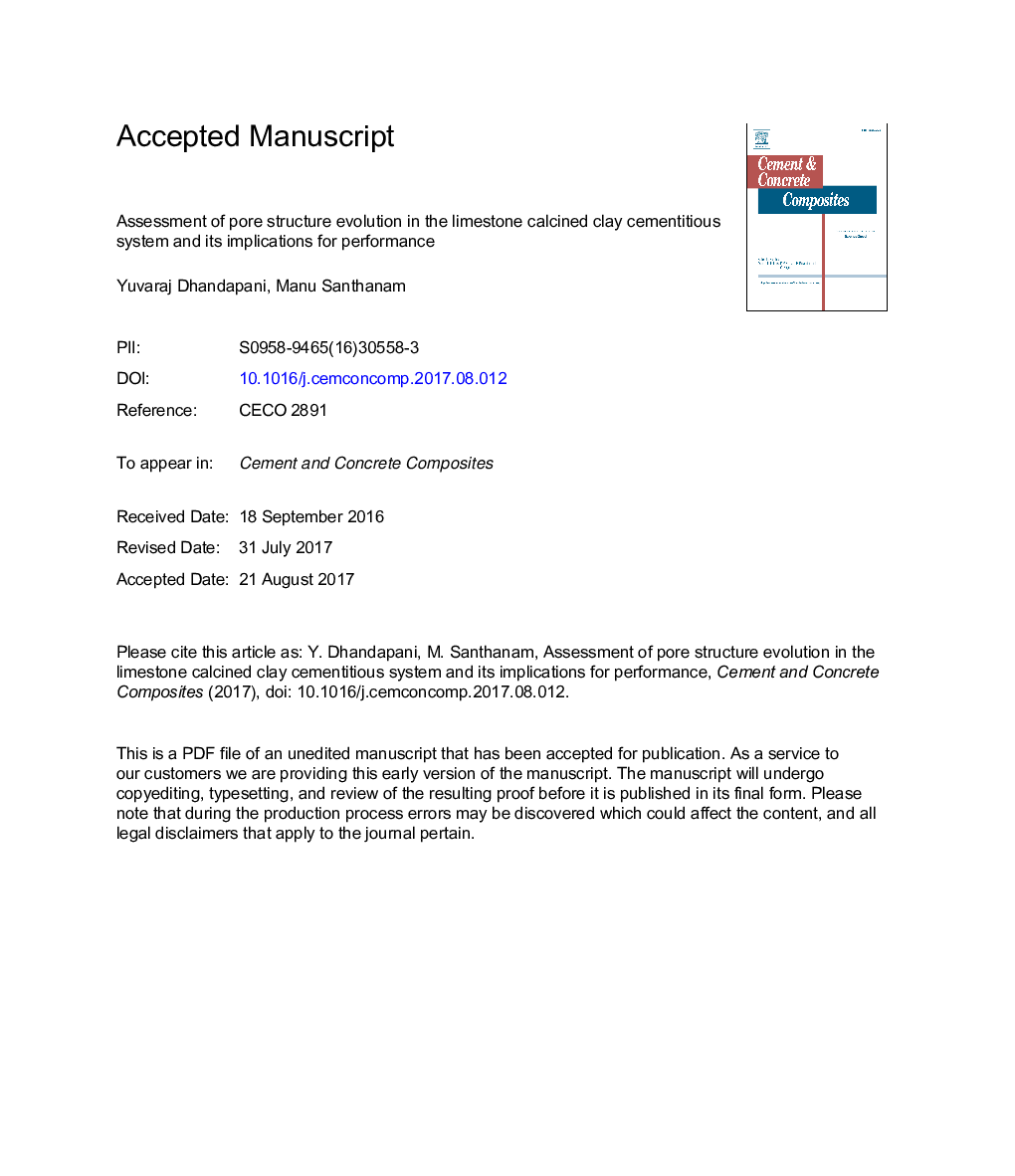| Article ID | Journal | Published Year | Pages | File Type |
|---|---|---|---|---|
| 5436748 | Cement and Concrete Composites | 2017 | 28 Pages |
Abstract
Use of limestone and calcined clay together for clinker substitution makes an effective low clinker cement blend, which shows promising mechanical properties at early ages. The performance of these cementitious systems strongly depends on the pore structure, which is a dominant factor governing the durability characteristics because of its direct influence on the transport properties. The experimental study described in this paper on three different binder systems including Ordinary Portland Cement, Portland Pozzolana Cement - with 30% Type F Fly Ash (designated FA30) - and Limestone Calcined Clay Cement (LC3) pastes shows that the LC3 system attains greater refinement of the pore structure as early as 3 days, as seen from mercury intrusion porosimetry. Electrical measurements also reveal lower conductivity in the system, which suggests better resistance to ionic transport in the binder phase. The results of hydrate phase assemblage studied by X-ray diffraction also indicate that greater amount of hydrates contribute in a major way to the reduction in the (water-filled) porosity in all the systems. This change occurs at varying rates for the different systems due to the difference in hydration characteristics. The estimated permeability suggests that the LC3 binder system attains much lower permeability compared to the ordinary Portland cement and FA30. A comparison of the formation factor shows distinct differences in the microstructural development and suggests a more durable binder with LC3 cementitious system.
Related Topics
Physical Sciences and Engineering
Engineering
Industrial and Manufacturing Engineering
Authors
Yuvaraj Dhandapani, Manu Santhanam,
